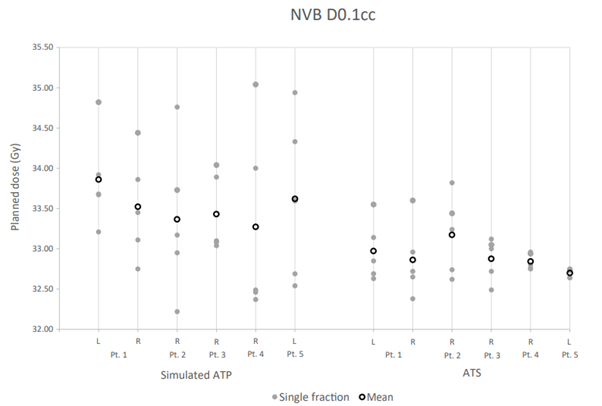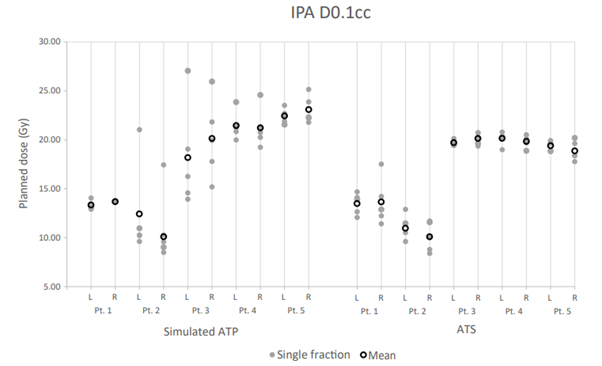Better neurovascular sparing by daily contouring and plan optimization in MRgRT for prostate cancer
Frederik Teunissen,
The Netherlands
PO-1420
Abstract
Better neurovascular sparing by daily contouring and plan optimization in MRgRT for prostate cancer
Authors: Frederik Teunissen1, Johannes de Boer1, Wietse Eppinga1, Eline de Groot-van Breugel1, Jochem Hes1, Joanne van der Velden1, Ruud Wortel2, Jochem van der Voort van Zyp1
1University Medical Center Utrecht, Radiation Oncology, Utrecht, The Netherlands; 2University Medical Center Utrecht, Urology, Utrecht, The Netherlands
Show Affiliations
Hide Affiliations
Purpose or Objective
The ERECT-trial is a
single-arm study assessing the effect of neurovascular sparing on erectile
function in 5 x 7.25 Gy magnetic resonance-guided adaptive radiotherapy (MRgRT)
for intermediate-risk localized prostate cancer (PCa). The 1.5T MR-linac used
in our study allows for daily recontouring and plan optimization for all
relevant structures (adapt to shape workflow, or ATS). The quality of the
obtained MR scans allows for visualization of the neurovascular structures, in contrast
to cone-beam CT. This study aims to assess the dosimetric difference for the
neurovascular bundle (NVB) and internal pudendal artery (IPA) between an ATS approach
and a rigid translation workflow (adapt to position, or ATP) similar to a couch
shift.
Material and Methods
The first 5 trial patients
completed treatment and were included in this study. Per patient 1 offline
pre-treatment plan and 5 online pre-treatment ATS plans of each fraction were
available. To simulate an ATP workflow,
we matched the daily online MRI with the offline planning MRI. Subsequently,
the daily adjusted ATS contours of the NVB and IPA were rigidly propagated onto
the offline pre-treatment plan, to simulate the planned dose that would have
been delivered to the NVB and IPA in an ATP setting. Planned ATS and
simulated planned ATP mean D0.1cc were compared using paired T-tests.
Results
The NVB was spared
bilaterally for 1 patient and unilaterally for 4 patients. The IPA was spared
bilaterally for all patients. The mean D0.1cc for the spared NVBs was
significantly lower in the ATS plans compared to the simulated ATP plans (32.90
Gy vs. 33.51 Gy; p < 0.001) (Fig. 1). The mean D0.1cc for the spared IPAs was
not significantly different (16.63 Gy vs. 17.60 Gy; p = 0.630) (Fig. 2). For
both structures the spread of the planned dose per fraction was wider for the simulated
ATP plans compared to the ATS plans.
Fig. 1: Planned simulated ATP
dose and planned ATS dose for the spared neurovascular bundles.

Fig. 2: Planned simulated ATP
dose and planned ATS dose for the spared internal pudendal arteries.

Conclusion
For the NVB, the mean
D0.1cc was significantly lower in the ATS plans compared to the simulated ATP
plans. The dose spread of the NVB and IPA of the 5 fractions was narrower in the
ATS plans. These early results support the use of MRgRT for daily
contouring in neurovascular-sparing treatment. Within the next months, more trial patients will be treated and analyzed.